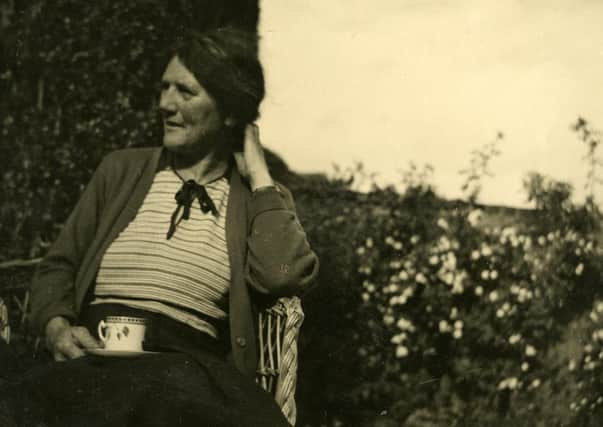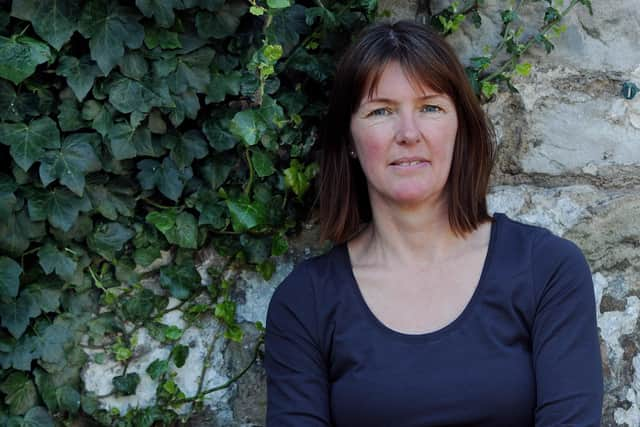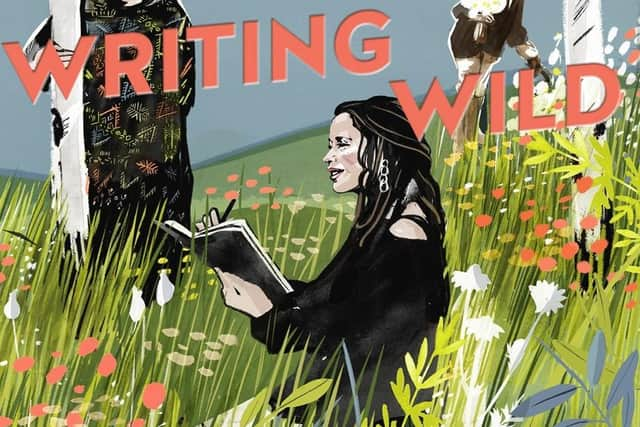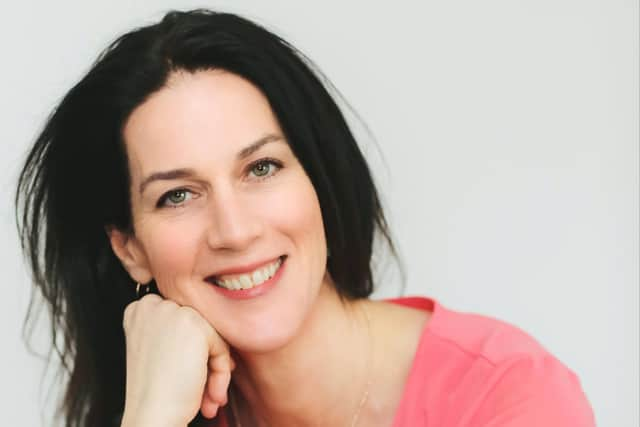The Scottish women writers who showed me the way


I bumbled jet-lagged along the high street in Exeter. Three kids in tow, I searched for the school uniform shop. Casual dress would be out for my children, starched white shirts, tartan kilts, and blazers were in. Thirteen years ago, my husband’s new university job enticed us across the pond from our wild farm in Washington State.
Nearly everything – words, food, accents, architecture, currency, mannerisms, government, geography – was new. Al-loo-MIN-yum for aluminium? What was a tor? Nappies, aubergine, trainers. Clearly, two nations divided by a common language.
Advertisement
Hide AdI stepped into a bookstore that day to get my bearings and found a field guide on classic walks in the United Kingdom. In those pages, two old words – public footpaths – became turnstiles into a new world I had never known. The car culture and barbed wire fencing of the American West into which I was born and had spent decades had long prevented me, I soon realised, from the casual rambling that the British find so very ordinary.


In the years and miles and landscapes we have walked – through Bronze Age earthen mounds, Roman ruins, stone circles, and flocks of sheep on short and long-distance walks – the one word that most captures the nature of this meandering is “stravaiging.”
Defined in the Dictionary of Scots Language as “a roaming about, an aimless, casual rambling, a stroll,” the spirit of stravaiging is something at which Scots have always excelled – as prominent explorers, plant hunters, writers and more.
I am in love with it – for the well-being, for the insights, for the intimate knowledge of places, for appreciating the great web of life and greater-than-human life.
So much so that my book, Writing Wild: Women Poets, Ramblers, and Mavericks Who Shape How We See the Natural World, celebrates the insights of fierce, trailblazing, and perceptive women from Dorothy Wordsworth in the Lake District to Elizabeth Rush on American shores. Scientists, historians, poets, walkers, naturalists. Some write about being in the wild or gardens. Some mourn the vanishing wild. Some write about inhabiting the idea of wildness.


I profile several Scottish women including Nan Shepherd whose visage appears on arguably the world’s most beautiful currency: the intricate blue £5 Scottish bank note. The exquisite work of Scottish poet and essayist Kathleen Jamie is featured as well as English writer Amy Liptrot whose moving recovery memoir, The Outrun, is set on the Orkney Islands where she rebuilds her inner landscape stone by stone, bird by bird, day by day.
Advertisement
Hide AdThe world needs to know more about these women and their writing, and the landscapes they write about, especially now during the lockdown when exploring local and regional areas of natural beauty here, rather than abroad, is a must. At the heart of nature writing is the question ‘How best to live in the world?’ These nature writers offer diverse perspectives to complicate and enrich our thinking.
Nan Shepherd is now known for her nonfiction masterpiece, The Living Mountain. With the help of my Perthshire friend, Steve, a walk was arranged in lowland Cairngorm forests with his knowledgeable friend, James, whose family has lived in Aboyne for seven generations.
Advertisement
Hide AdOne bright and blue morning in February, James and I met at The Boat Inn on the shimmering River Dee. We crossed a stone bridge and walked upward into the foothills along the Fungle Road right-of-way, a rocky and saturated forest path scattered in pine needles. As we walked, and I listened to stories of his family’s history on the land, I was attentive to life around me. A buzzard flashed its ochre underside through an opening in trees. Wind blew through pines. Mossy branches and pine cones fell onto our path. We arrived at a rest-and-be-thankful and then continued on the path, higher and higher through expanses of brown heather as snow-capped peaks came into view.


“What the Kent countryside was for Vita Sackville-West and the Lake District for Dorothy Wordsworth,” I later write in Writing Wild, “the Cairngorm mountains in Eastern Scotland were for Anna ‘Nan’ Shepherd. In the field of mountaineering literature, with hundreds of books chronicling glorious disasters and fatal ascents, Nan Shepherd, a writer active in the Scottish literary renaissance of the 1920s, is now recognised as one of its best.”
Part memoir, part natural history, and part reverential prose poetry, The Living Mountain was written during the Second World War when Shepherd, who lectured in English for 40 years at the teacher training college in Aberdeen, went stravaiging – alone or with friends, in all seasons, and all weather – in the Cairngorms. But the slender book of 30,000 words wasn’t published until 1976. It languished in a drawer for more than 30 years. Was it a shortage of paper, a thyroid condition that sapped her energy for a while, lack of confidence?
None of those reasons. What set Shepherd apart from other nature writers at the time – male or female – was the way she wrote about the mountains with a beautiful sensuality and Buddhist-infused sense of pilgrimage. She wrote, “Often the mountain gives itself most completely when I have no destination as one visits a friend, with no intention but to be with him.” She probably kept the book in a drawer because she feared how writing sensually about body in the landscape would be received in the conservative culture, among dominant male climbers and data-driven scientists.
It feels like Shepherd is with us as James and I step out of evergreen shade and into a shapely expanse of brown heather punctuated by wind-sculpted pines, a rain-shadowed slope that transforms into a rich autumnal tapestry of purple and pinks, every autumn. And I think of Shepherd walking in these hills, forests, and mountains where she delighted going barefoot to feel the “delicious touch” of earth underfoot. She swam nude in luscious lochs and described how the water “slides over the skin like a shadow.” She inhaled “rich fruity perfume rising from the mat of grass, moss, and wild berry bushes” on sultry midsummer days after rain.
After hours of walking in such a wild place I think of Shepherd’s legacy. The Living Mountain reminds us that there should be no limitations imposed by others on the ways we find meaning in the natural world – male or female, abled or disabled, white or brown or black, straight or gay. The Living Mountain also reminds us not to allow others to stifle our unique voices. Our voice should not be drawered. Shepherd went to the Cairngorms not to measure and quantify, but to feel and to be. In doing so, she captured the Cairngorms and herself in many seasons of life.
Advertisement
Hide AdIn the years since I moved to England, I have also taken up the curious hobby called mudlarking. In Victorian London, a mudlark was a destitute person, often a child, who scavenged through mud on the tidal River Thames for anything of value to sell – iron, coal, rope, copper, brick, bone, wood, coins. When I now go to the watery archaeological site of the River Thames, I look down at my feet where narratives of the past are exposed at low tides. My finds have included a rare token from 1500, coins, Staffordshire slipware, clay pipes, and Roman pottery.
But when I was researching Writing Wild, I came across a singular book by the acclaimed Scottish poet and essayist Kathleen Jamie called This Weird Estate (2007). Unsure what to make of it, I ran my hand over its raised felt cover, the colour of pink flesh. Of all the books I read for Writing Wild, reading this one was one of the most profound. Six poems are accompanied by illustrated plates of human anatomy – all engrossing, detailed, and haunting – credited to Scottish physicians John Lizards (1787-1860) and Richard Quain (1816-1898).
Advertisement
Hide AdThis Weird Estate explores our wild anatomies, from human ova to planet Earth. In one image, a black-and-white X-ray of an infant, the girl appears to be in a sleeping or languid state – on her back one knee raised, the other fallen to one side – but upon closer examination, I see her tiny bones are not yet fused. She is stillborn. The X-ray reveals an intricate landscape inside her that looks alive. Arteries branch off her abdominal aortas like silhouettes of winter trees along a river. Tiny blood vessels in her brain resembled twisted trees.
Jamie’s taut, exquisite poetry accompanies the anatomical images. Untitled, the poem is in the voice of a woman who has collected lichen, lungwort, blueberry sprigs, broken birch twigs, and moss in winter woods. Combined with the X-ray image, the reading experience is heady and emotional. Any woman who has carried a child, lost a child, or deeply longed to be with child, well knows the many meanings of “winter” – grief after miscarriage, sorrow after an abortion, mourning after a child is stillborn, postpartum depression, the heartache of infertility.
A rambler like all the women in Writing Wild, Jamie has written three collections of essays – Findings (2005), Sightlines (2012), and Surfacing (2019). She is like a mudlarker who scours Scottish island beaches and other settings for treasures in nature and language. She has written, “I have what Robert Louis Stevenson called ‘a strong Scots accent of the mind’ and my constellation of interests seem to include the natural world (widely defined), archaeology, medical humanities, and art.”
Jamie became interested in probing the past and exploring beyond what the eye can see when she was a teenager participating in an archaeological dig in the Scottish Highlands. Now a professor of poetry at the University of Stirling, her numerous books of poetry – including The Tree House (2004), winner of the Forward Prize for best poetry collection and a Scottish Arts Council Book of the Year; The Overhaul (2012) recipient of a Costa Book Award; and The Bonniest Companie (2015) – are set in Scotland and examine how its landscapes shape the humans who live here.
The best nature writing shows close, repeated observations of patterns and rhythms of the natural world. This is one of the hallmarks of the women in Writing Wild. Set in the Orkney Islands, The Outrun (2015) by Amy Liptrot is a raw and glistening memoir of recovery. It won the Wainwright Prize for best nature, travel, and outdoor writing in 2016. Her journey back to northern Scotland is a deliberate attempt to rebuild her inner life from a decade of alcoholism in London.
The Orkneys reshape her.
Liptrot begins her recovery by repairing crumbled dry stone dykes on her family’s farm. The repetitious work slows her, roots her, and shifts her thinking from the days and months of her own life to the decades and centuries beyond herself. Her immersion in human and greater-than-human life – birdwatching, cloud-spotting, lambing, star gazing, stravaiging, wild swimming, wall building – is a shimmering reminder of nature’s profound palliative powers.
Advertisement
Hide AdAmy Liptrot, Nan Shepherd, and Kathleen Jamie are all writers who show how slow, repeated contact with the natural world of Scotland can help us see our place in the family of things.
An oft-quoted 1984 study showed that patients in hospital rooms with a view of trees had shorter hospitalisations, less need for pain medication, and fewer negative comments in nurse’s notes compared to patients with views of brick walls. We are meant to be in nature. We are part of nature. Nature offers hope. Nature offers renewal. Nature can rewrite our inner geographies.
Advertisement
Hide AdOne woman whose work I want to celebrate, but I could not include for lack of space in Writing Wild, is Amanda Thomson, an artist and writer who teaches at the Glasgow School of Art. Her first book is the beautifully-illustrated A Scots Dictionary of Nature. It is a book that has been described as “revealing ways of seeing and being in the world that are in danger of disappearing forever.” When I visit the Cairngorms or Orkneys or Isle of Skye, it is a book I will want to carry with me when exploring Scotland again.
Stravaiging helped me adjust to my expat life and I fell in love with it. I cannot imagine living in a place where I cannot walk freely. The women Writing Wild have made important impacts on society through this way of observing the world.
To restore your own mental and physical well-being during this pandemic, take to stravaiging – two metres apart. And let these women be your guide.
Kathryn Aalto is a New York Times bestselling author living in Exeter. Her new book is Writing Wild: Women Poets, Ramblers, and Mavericks Who Shape How We See the Natural World (Timber Press, £18.99)
Comments
Want to join the conversation? Please or to comment on this article.